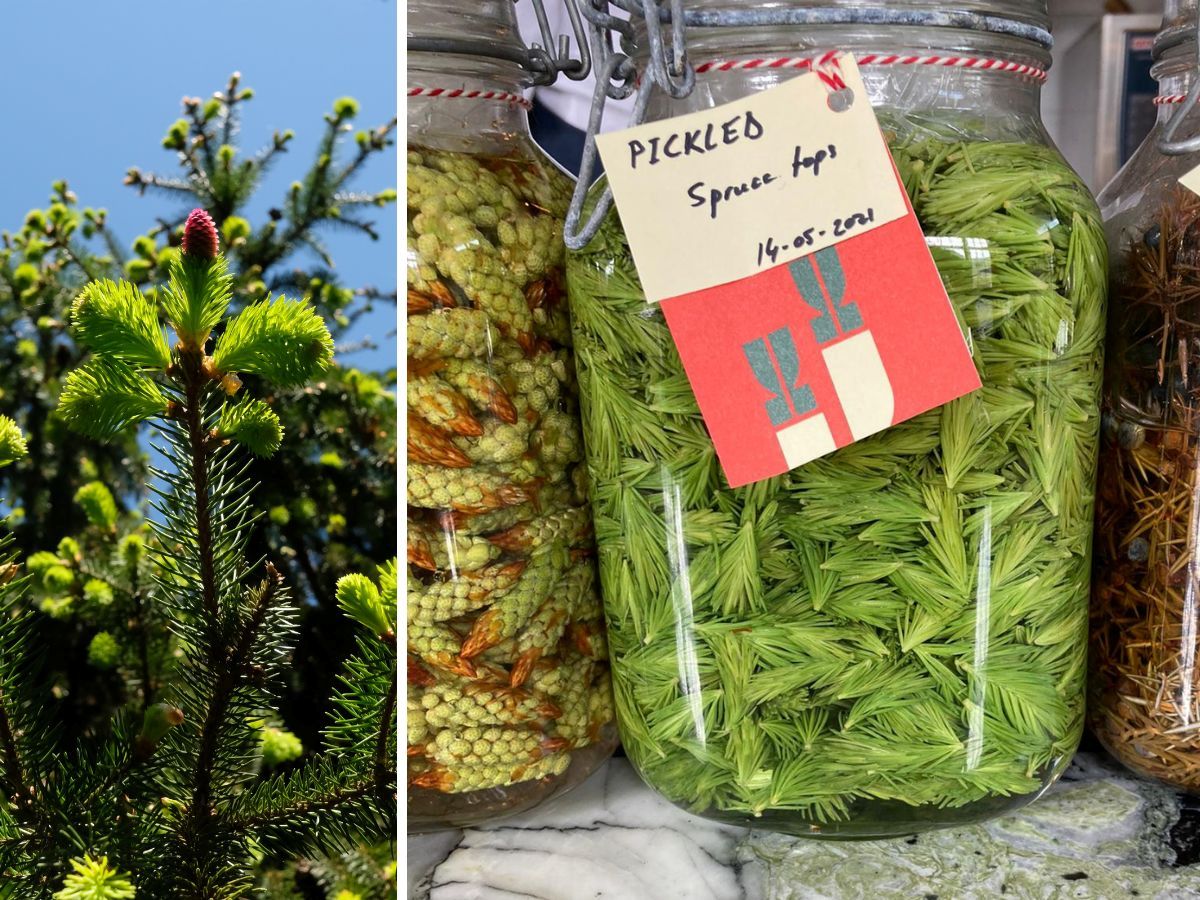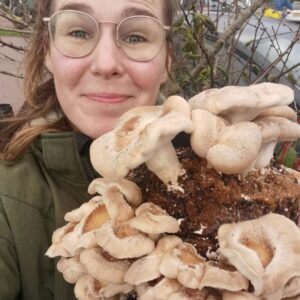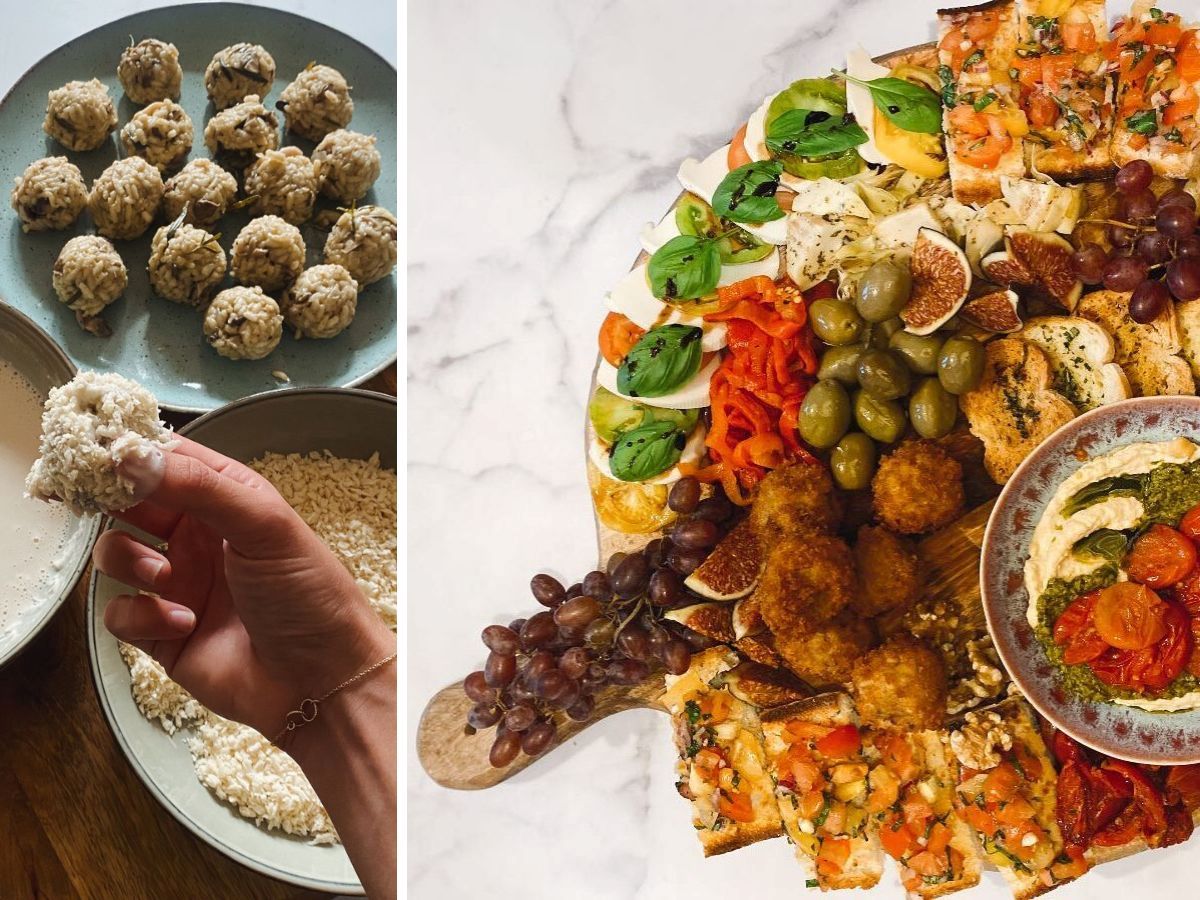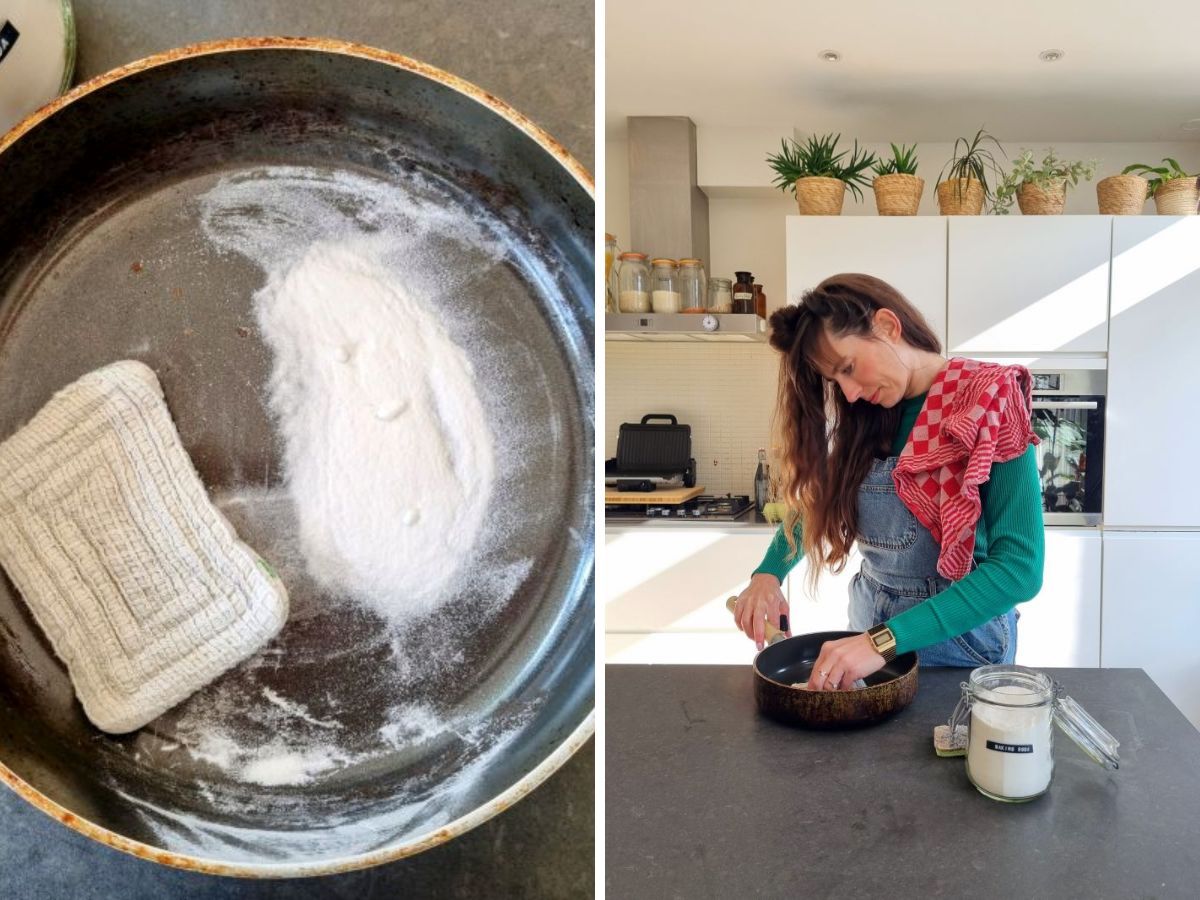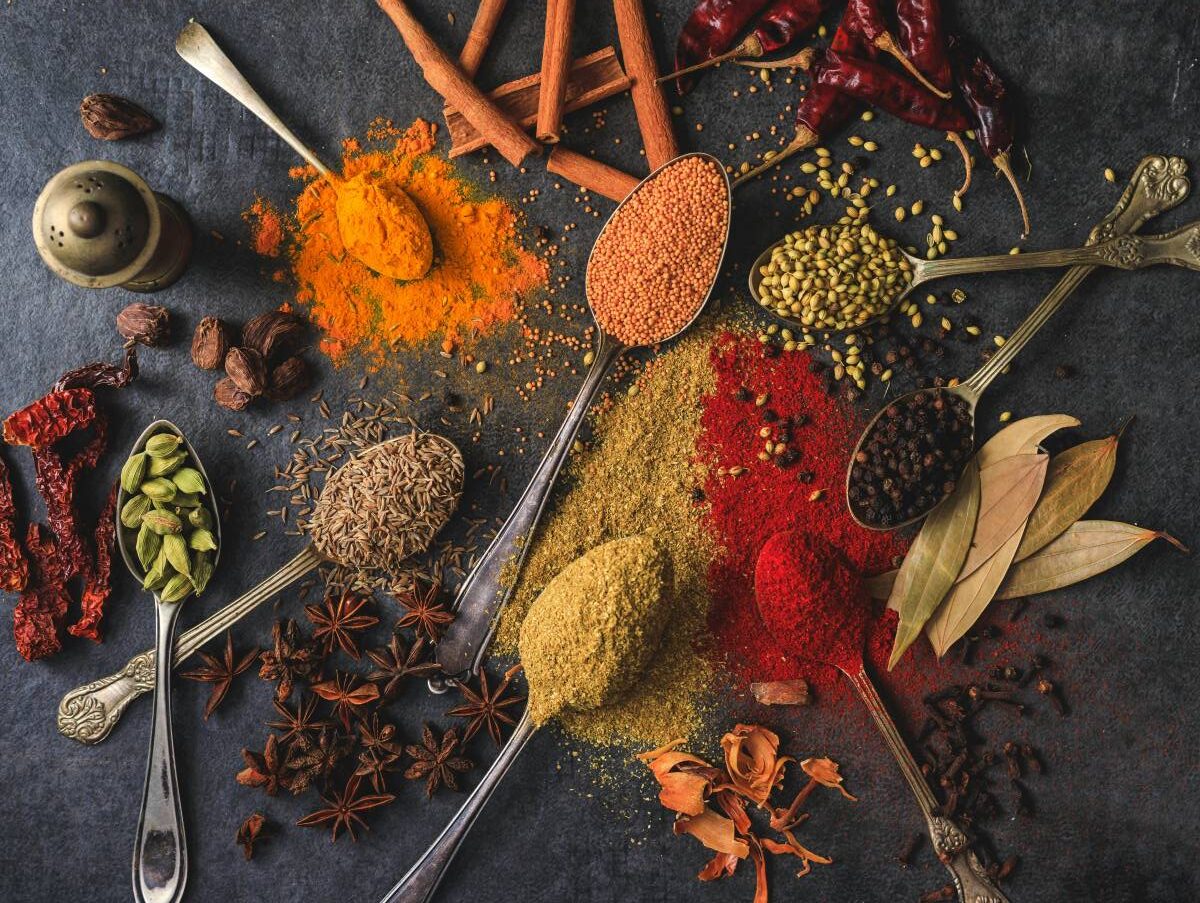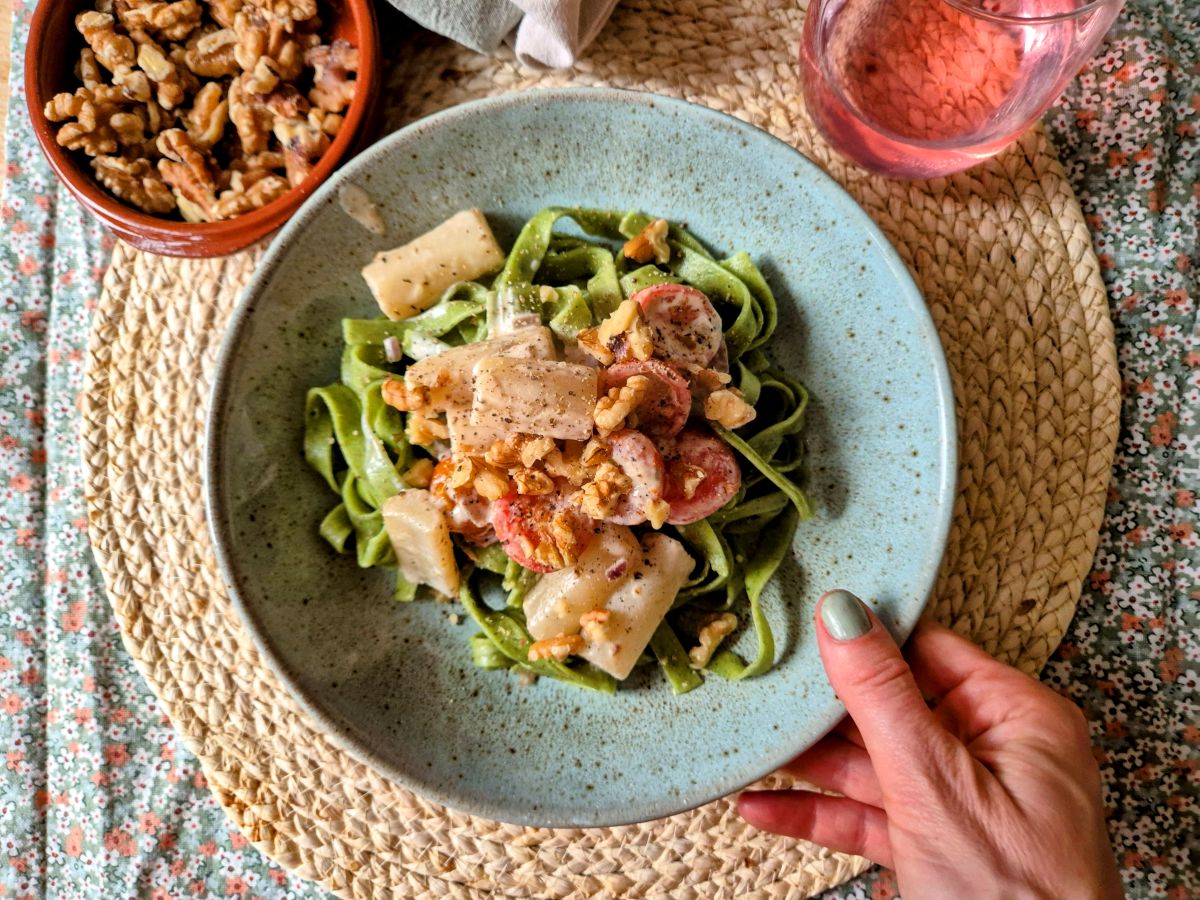We go into the forest again with our wild picking expert Katja Wezel from wilderlust.nl. This time she makes a surprisingly delicious and long-lasting recipe with spruce tips. The young, fresh green ends of the spruce are not only edible, but also packed with flavour and vitamin C. And you can use them in all sorts of ways - but today we are pickling them. That way you can enjoy them for months to come.
The spruce, a tasty tree full of surprises
The spruce is a tree you can really do anything with. It grows with needles that stay green all year round and hardly ever loses them - at most, just like people, some ‘hair’ a day. The needles are individually attached to the branch (useful for recognising them, more about that later). You also often see these elongated spruce cones hanging down - these are the female cones. This is because the tree is monoecious, which means it has both male and female blooms. You can recognise male flowering by the soft cones full of pollen at the base of young shoots.
From April to May, the young, fresh-green buds appear - and then it becomes interesting for wild pickers. Those buds are edible while they are still soft. You can eat them raw, mix them in salads, pickle them in honey or - as in this recipe - pickle them in acid. The other parts of the tree are also versatile: needles for tea, flower buds as a herb, the cambium (the inner layer under the bark) even as a kind of paste. And who smokes vegetables on the BBQ or in the oven? Put a spruce branch on top. Flavour bomb!
This is how to recognise a spruce!
There are different types of spruce. The Norway spruce is the best known - that's that typical Christmas tree you see everywhere around December. (And no, this is not a tip to eat your Christmas tree, as they are often treated with pesticides. So skip those). You can also find the silver fir and the Douglas fir in the Netherlands, and they are all edible and have their own flavour profile: the Norway spruce is citrusy, the Douglas fir is reminiscent of orange and grapefruit, and the silver fir is more subtle.
Sparring is relatively easy to spot. A handy trick is to roll a needle between two fingers. Does that work smoothly? Then it's usually a Norway spruce. Is it difficult? Then you probably have a silver fir or Douglas fir - as they have flat needles. The other rule is: spruce = solo. The needles grow individually on the branch. A pine has pairs, and with the larch the needles grow in bunches. So you know for sure that you are dealing with a spruce.
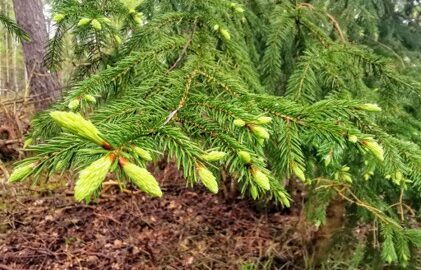
This is how you recognise a spar(rentop).
Fun fact: the silver fir lives in symbiosis with the chanterelle, an orange summer mushroom and a true delicacy. So: if you learn how to recognise a silver fir, you immediately increase your chances of coming across this delicious mushroom. Two birds with one stone!
When does spruce grow?
In spring, the spruce begins to come to life and from April, the young, fresh-green spruce buds appear. These buds are soft, juicy and packed with flavour. Male and female blooms can also be seen then, with flower buds and cones that you can use in cooking. But it is those young tips that we focus our attention on now. Because April and May are the time to pick them. Fresh from the tree, and then... into the pot!
Confusion danger: the poisonous yew
The spruce is edible, but beware: it has a poisonous brother - the yew. This bushy conifer may look a bit like a spruce at first glance, but you really don't want to make a mistake. Everything about this tree is extremely poisonous. Only the flesh of the red berries (which grow on female trees) is edible - and even that has to be done with care, because the seed inside is lethal for both humans and animals.
This is how to recognise the yew:
- The youngest, outer branches do not yet have a woody, but green core branch (to which the needles are attached). Spruces are always woody, except for the young, pale green spruce tips that are reminiscent of tassels.
- Grows wide rather than tall (usually no higher than 10 to 15 metres).
- Has bendable twigs (spruces break faster).
- The ‘needles’ are more like flat, soft leaves.
- Leaves are often arranged messily or in two rows on the branch.
- Late summer: bright red berries on female bushes.
What is also special: this dangerous tree is used in medicine to fight diseased cells in chemotherapy. So yes - deadly, but also life-saving. Moral of the story? Make sure you know what you are picking.
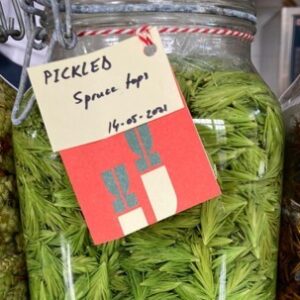
Spruce buds on acid
Kitchenware
- glass (jam) jar or weck jar
- kitchen scales
Ingredients
- handful of youngsters light green spruce buds
- 100 gr sugar
- 140 gr water
- 280 gr natural vinegar
Instructions
- Roadmap
- Important: also weigh the water and vinegar well!
- Heat the water slightly and pour it over the sugar. Stir until the sugar is completely dissolved.
- Then add the vinegar and let the mixture cool well.
- Sterilise your jar: rinse the jar and lid well with hot water and then put them in a 120°C oven for 10 minutes, or boil them in a pan of water for 5 minutes. Then drain them upside down on a clean tea towel.
- Put the washed spruce buds in the sterilised jar.
- Pour the cooled vinegar mixture over the tops until they are well covered.
- Seal the jar tightly and put it in the fridge.
- After about one month, spruce buds are at their tastiest.
- Keep for up to a year - as long as they stay below moisture and you work hygienically.
Neat game picking
Picking spruce buds is lovely to do, but remember: wild picking is tolerated in the Netherlands, and that means you have to act with respect for nature. Pick only for your own use, never take more than you really need and always leave enough - for animals, the tree itself and other nature lovers. And always check if you are walking in a nature reserve where extra rules apply. Want to know more about what to look out for? Here is a handy overview of the game picking rules.
Would you also like to go on the road with Katja? Check out her website Wilderlust with all the information about its wild-picking walks and courses.
More wild-picking inspiration
- Also see: On wild-picking walk in the Amsterdam forest.
- Making your own: elderflower syrup!
- Getting started with your own badger garlic butter.
Photo credits: Katja Wezel.

